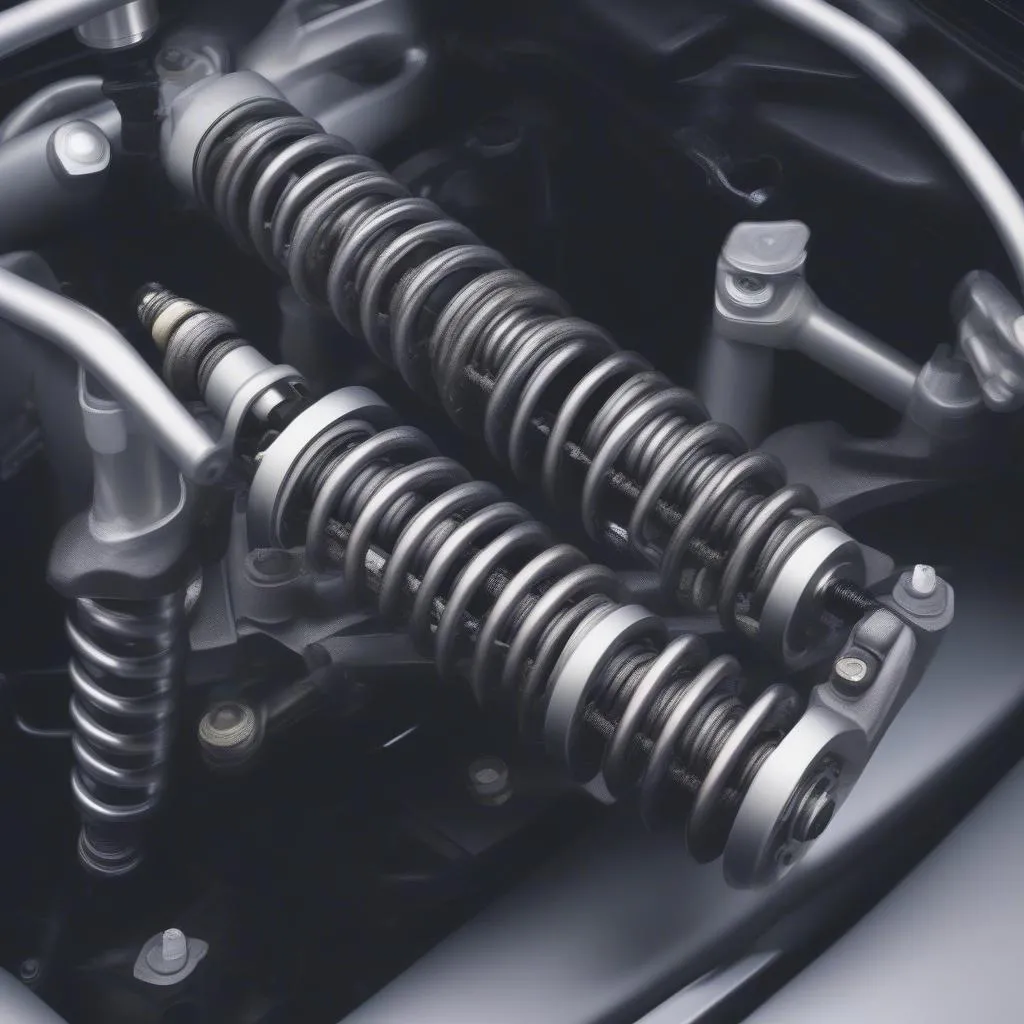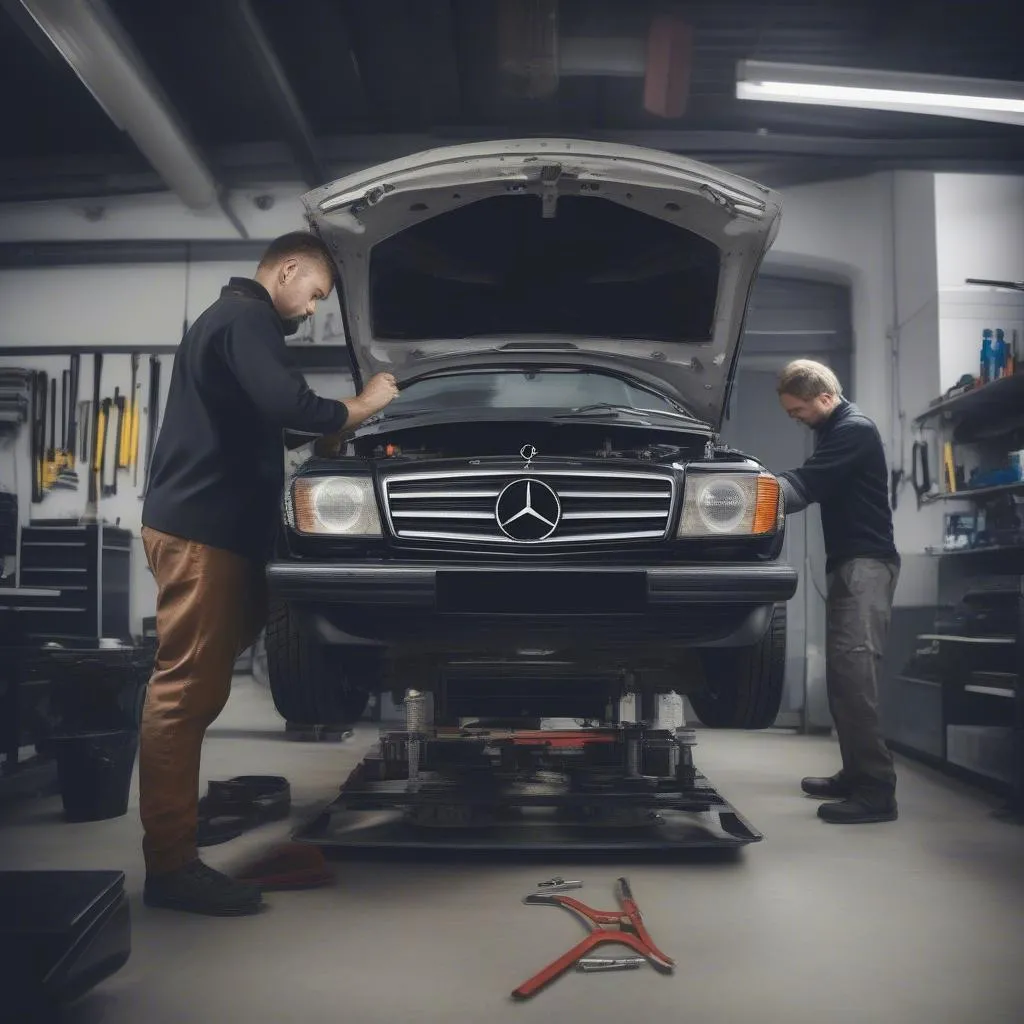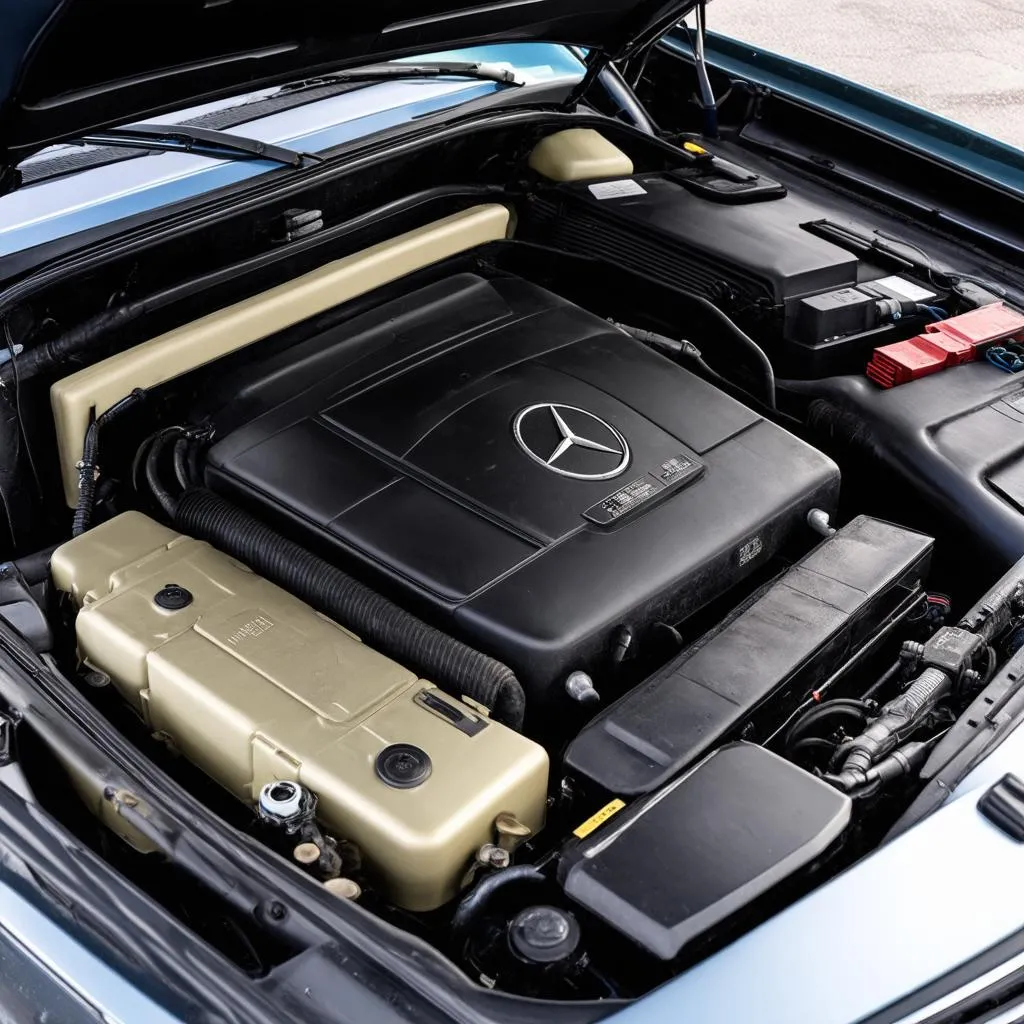The Mercedes-Benz, a symbol of luxury and engineering prowess, isn’t immune to the quirks of cutting-edge automotive technology. One such quirk that reared its head in recent times is “porpoising”. This phenomenon, experienced as an unsettling bouncing sensation at high speeds, has left many a Mercedes owner wondering about a fix.
Understanding Porpoising: Why Does My Mercedes Bounce?
Porpoising, in the context of high-performance vehicles like your Mercedes, is primarily an aerodynamic consequence. The ground-effect aerodynamics, designed to suck the car to the track for improved grip, can sometimes trigger this bouncing effect. It’s like the car is trying to find a stable balance between downforce and ride height.
Spotting the Telltale Signs: Is My Mercedes Porpoising?
Porpoising is hard to miss. You’ll feel a rhythmic bouncing, particularly at high speeds on smooth roads. It’s not just uncomfortable; it can impact handling and performance.
Diagnosing the Issue: Beyond the Bounce
While experiencing the bounce itself might be enough to suspect porpoising, it’s wise to delve deeper. “Porpoising can sometimes be confused with other suspension issues,” says automotive expert Dr. Emily Carter from the Institute of Vehicle Dynamics, “A thorough check of your Mercedes’ suspension system is recommended.”
 Mercedes Suspension System
Mercedes Suspension System
The Mercedes Fix: Taming the Porpoising Beast
Mercedes-Benz, aware of the issue, has been actively working on solutions. “Software updates have shown promising results in mitigating porpoising,” notes Dr. Carter, “These updates optimize the car’s aerodynamic settings for a smoother ride.”
Beyond Software: Exploring Other Avenues
While software updates form the first line of defense against porpoising, other tweaks might be necessary. “Adjusting suspension settings, particularly ride height and damping, can also contribute to a fix,” adds Dr. Carter.
 Mercedes Mechanic
Mercedes Mechanic
FAQs: Addressing Your Porpoising Concerns
-
Can I fix porpoising myself?
While some adjustments might seem tempting to DIY, it’s best to leave porpoising fixes to the experts at authorized Mercedes-Benz service centers. They have the tools and expertise to ensure your car’s complex systems are working in harmony. -
Are all Mercedes models prone to porpoising?
While porpoising has been observed in various Mercedes models, the severity and prevalence vary. Models with advanced aerodynamic features, particularly those designed for high performance, might be more susceptible. -
Does Cardiagtech offer products to diagnose this issue?
CARDIAGTECH offers a range of advanced diagnostic tools suitable for many vehicle brands, including Mercedes-Benz. To explore their product line and find the perfect fit for your diagnostic needs, visit the CARDIAGTECH website. You can discover more about how their products can help you here. -
Will future Mercedes models be free from porpoising?
Mercedes-Benz is committed to continuously refining its technology. Future models will likely incorporate lessons learned from the porpoising issue, aiming for an even smoother and more enjoyable driving experience.
Conclusion: A Smooth Ride Ahead
Porpoising, though initially unsettling, is a surmountable challenge for your Mercedes-Benz. With a combination of software updates, fine-tuning, and expert care, you can reclaim that signature smooth and powerful ride you expect from a Mercedes. If you’re experiencing this issue, don’t hesitate to contact your authorized Mercedes-Benz service center – they’re equipped to help you tame the bounce and enjoy the drive.


